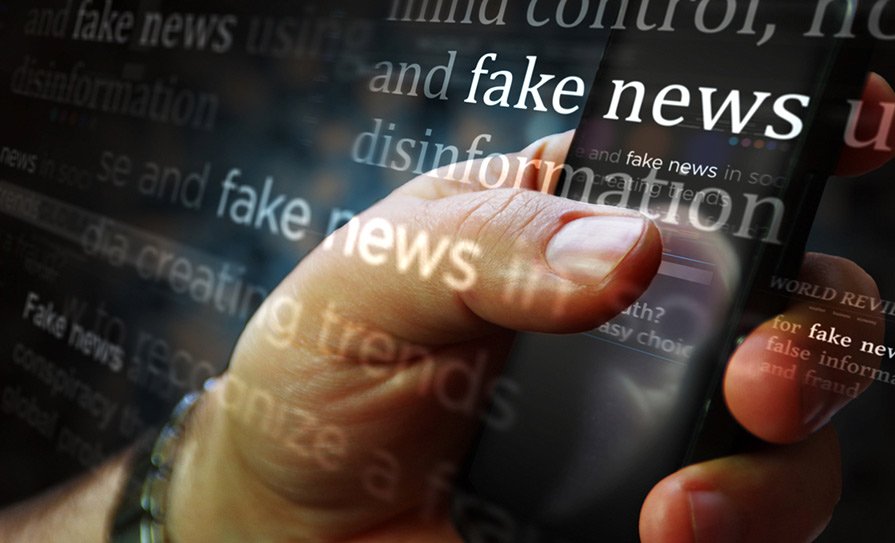
Tackling the rise of ‘fake news’ may need new ways of thinking
There are many legacies of Covid-19 infection. One of the most unexpected, but a very real phenomenon, was the resurgence of ‘fake news’. And it wasn’t just about vaccines and their safety. False narratives around the gardaí detaining people who had broken lockdown and social media messages announcing there would be a total lockdown the following morning were common. One of the features of false messages is the speed at which they travel.
“Disinformation” is false information created with the intention of deceiving someone. “Misinformation” is also false, but could be the result of an honest mistake. Disinformation, however, aims to intentionally mislead.
RTÉ media correspondent Sinéad Crowley recently interviewed Martina Chapman, a specialist in media literacy, who makes the point that disinformation ties in with our own personal anxieties and fears. She advises readers that if they see something online that triggers an emotional response they should stop and think why the information is making them feel that way.
Chapman suggests asking the questions: “Why am I outraged?” and “Why has someone created content to make me feel this way?”. It seems the spread of disinformation relies heavily on the concept of there being a ‘real truth’ out there, truth that someone, somewhere has a vested interest in keeping from you.
Fake news is not a new phenomenon. Ramesses the Great, in 1200 BC, deliberately spread false information claiming the battle of Kadesh was a victory for the Egyptians over the Hittites, when in fact it was not.
But, what is new is how the term fake news has also been manipulated to describe news that someone simply doesn’t want to be heard. It doesn’t come as a surprise to learn that former US president Donald Trump was a pioneer of this development. He frequently used the term to avoid questions from reporters or dismiss entire news organisations.
Some examples of disinformation are quite hard to debunk, especially if they are targeted at those most likely to believe them.
For those who are unsure whether or not to trust the information they come across, Chapman recommends the website www.bemediasmart.ie, which is an initiative of Media Literacy Ireland and is supported by bodies including regulators and the tech companies themselves. The site contains tips on how to verify information, including advising people to read past the headline and not to assume that if something has gone “viral” then it is automatically true.
It also advises people to check their own biases and to ask themselves if the information they have come across challenges them or matches their own views. Guides to navigating the misrepresentation of science and health evidence online by organisations such as Sense About Science may also help.
However, advising people who don’t recognise disinformation in the first place is far more difficult, Chapman says.
Social media is made for false health news. More than 60 per cent of adults source their news online. The Rand Corporation, a non-profit, non-partisan research organisation, said a combination of the 24-hour news cycle and social media was one of the principal drivers of what it called ‘truth decay’.
This phenomenon has seen a blurring of the line between opinion and fact, with personal experience seen as more influential than fact, leading to less trust in usually respected sources of factual information.
Is it possible that ‘positive propaganda’ might have a role in tackling false health news? Positive propagnda may appear to be an oxymoron due to the word’s association with manipulation. Propaganda, be it for good purposes or bad, is a specific form of persuasion that taps into the non-rational and emotive sides of human beings.
Anna Hennessey, writing in the online journal Psyche, has an interesting spin on the value of positive propaganda.
She describes how, learning from Sigmund Freud that people are fundamentally irrational and guided by their senses, his nephew Edward Bernays used his uncle’s theories on the human psyche for practical purposes to develop the field of public relations. In order to sell products Bernays advised companies to tap into human desire, connecting the purchase of a product to the fulfilment of a desire. A person might purchase a car, for example, believing it to be a necessity in life when, in reality, the car’s true meaning for the person relates more to a desire for advanced social positioning than a need for transport.
Could this offer an opportunity for us to tackle false health news? Rather than attempting to change people’s false beliefs through facts, analysis, and logical argument, there may be another way of achieving the goal.
Might a better understanding of propaganda and how to use it as a tool for positive change help to stem the tide of false health news?





Leave a Reply
You must be logged in to post a comment.